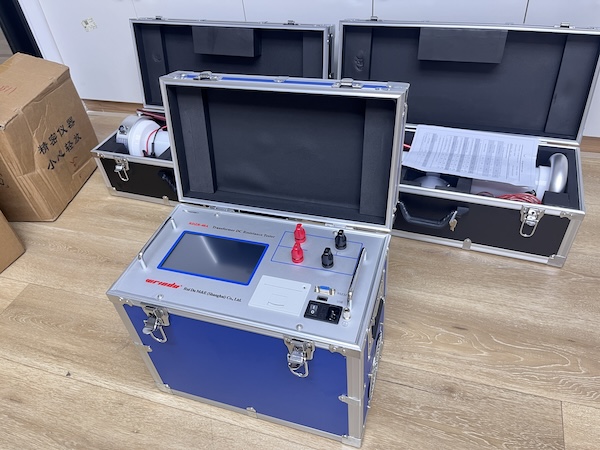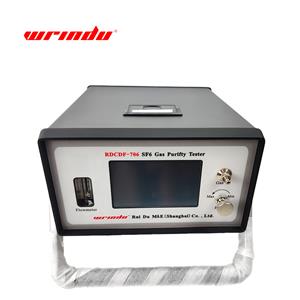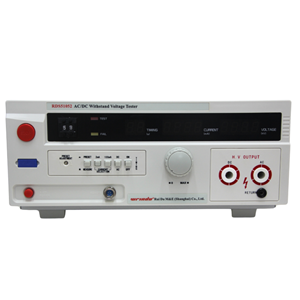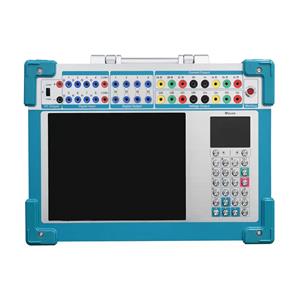Analysis of the causes of unbalanced transformer DC resistance test
In the transformer DC resistance test, it will be found that the DC resistance value of the winding will be unbalanced, the reason can be divided into human factors, winding structure and material problems and transformer defects in three cases.
In order to meet the needs of fast measurement of transformer DC resistance, our company developed RDZR-40A DC Resistance Tester. The instrument adopts new power supply technology, which has the characteristics of small volume, light weight, large output current, good repeatability, strong anti-interference ability, perfect protection function and so on.
For detailed product parameters, please click RDZR-40A.
To get the latest quotation, please click Contact Us.
Features
1. The whole machine is controlled by high-speed single chip microcomputer, with high degree of automation and easy operation.
2. The instrument adopts new power supply technology, with many current ranges and wide measurement range, which is suitable for DC resistance measurement of large and medium transformers.
3. The protection function is perfect, which is reliable to protect the impact of back EMF on the instrument, and the performance is more reliable.
4. Sound discharge alarm, clear discharge indication, reduce operation mistakes.
5. Fast response.
6. Intelligent power management technology, the instrument always works in the minimum power state, which can effectively save energy and reduce heating.
7. 320x240 ultra small pixel 65K true color liquid crystal,
8. The instrument has its own calendar clock and power down memory, which can store 1000 groups of test data and can be consulted at any time
9. The instrument is equipped with RS232 and USB interface, which can communicate with computer and store in U disk.
1.Human factors
Mainly include incorrect selection of instruments, incorrect test methods and test points not performed according to the regulations, etc. These problems are mainly solved by improving the quality of personnel themselves. Unreasonable design of winding structure and unqualified conductor material will also cause DC resistance unbalance degree exceeding the standard.
2. Poor linking of internal structural parts of the transformer
If the winding leads and conductive rod or tap changer link is not, or casing will be military cap and conductive rod contact is poor, will lead to transformer DC resistance imbalance degree exceeds the standard. This situation is generally manifested in the corresponding phase of a file or a few files of DC resistance value is large.
The key to solving this kind of problem is to improve the quality of installation and maintenance, check whether the connection parts are well connected. In addition, in operation, infrared testing and chromatography analyzer can be obtained through the results of the analysis of a comprehensive judgment, timely investigation of the fault location, as soon as possible to deal with.
3. Transformer winding defects
Winding defects mainly include winding and lead connection welding, desoldering, winding broken wire, broken strand and interlayer short circuit. If the winding and lead connection will cause resistance is large, multi-strand parallel winding one or two strands are not welded, the general resistance is also large. Triangular connection of the winding, if there is a phase of broken wire, then the resistance between the lines of this phase for the normal value of 3 times, the other two lines of resistance for the normal value of 1.5 times.
When the system occurs short circuit fault, easy to cause winding broken strand, turn-to-turn short circuit, so when the transformer receives a short-circuit current impact, should be measured in a timely manner after the DC resistance, found that the problem of timely maintenance; in addition, can be utilized to chromatography results of the comprehensive analysis and judgment.
4. On-load tap-changer faults
4.1 Displacement of the on-load tap-changer gear pointer: The displacement of the on-load tap-changer gear pointer can also lead to an exceeding of the DC resistance imbalance of the transformer. In the on-load tap-changer test carried out before the transformer leaves the transformer factory, there is a check of the on-load tap-changer position as a matter of course. In addition, after overhaul of the on-load tap-changer, this must also be checked.
Under normal conditions, the DC resistance of the on-load tap-changer gears should comply with the law of increasing or decreasing. If this is not the case and the three-phase situation is the same, this may be caused by the displacement of the on-load tap-changer gear pointer. For on-load tap-changers with split-phase switching gears, this irregularity may only occur in one phase, which is the misalignment of the on-load tap-changer.
4.2 Misconnection of the on-load tap-changer leads: Due to the large number of on-load tap-changer positions and leads, misconnection of the leads may occur in the factory and during maintenance. Misconnection of the on-load tap-changer leads is manifested by an exceedingly high DC resistance imbalance in the wrong position, which does not correspond to an increasing or decreasing resistance.
4.3 Poor contact of the on-load tap-changer Tokyo contacts: The defects of poor contact of the movable and static contacts of the on-load tap-changer account for the largest proportion of all types of defects in the transformer, which are mainly manifested in the large resistance value of a certain file or files and the high degree of imbalance of the DC resistance. The main reasons for this are contamination of the contacts, detachment of the plating layer and insufficient spring pressure. Insufficient pressure at the contact points of the on-load tap-changer contacts leads to oxidation of the plating material on the contact surfaces, which in turn triggers poor contact. This is most common in transformers with long operating times.
In the case of a newly installed on-load tap-changer, there may be an oil film on the main contacts that has not been removed. On-load tap-changers that have been in operation for a long time and have not been actuated for a long period of time have a layer of oxide film or oil film on the contact surfaces. The presence of oxide film and oil film increases the contact resistance of the on-load tap-changer contacts, resulting in an unbalanced DC resistance. The main manifestation of this is that the data is disorganized, decentralized and irregular.
It should be noted that for the on-load tap-changer selector, the contact between the contacts is frictional, so the diverter switch action of the on-load tap-changer can be used to clear the oxide film and oil film on the moving and static contact surfaces; for the diverter switch, since the contact between the moving and static contacts is folio, there is no friction on the contact surfaces during the tap-changer action, and so the contact surface can only be dealt with by lifting the core and checking the contact surface for Dirt .





